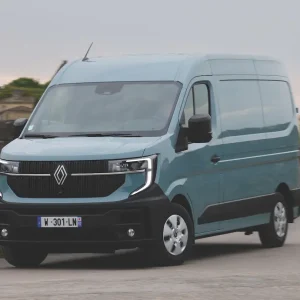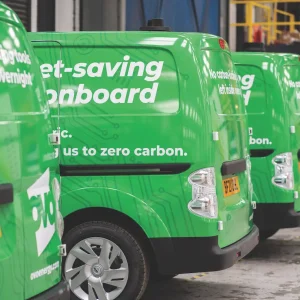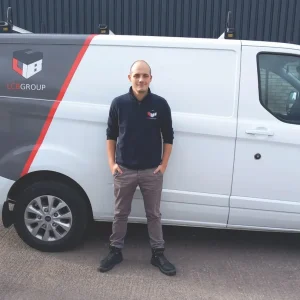The march towards pure electric LCVs is gathering pace, but many operators still have cold feet about making the leap from their tried and trusted ICE vans.
Their misgivings largely centre on the usual gremlins of range anxiety, insufficient charging facilities and scepticism that plug-in vans will be able to hack it as load-lugging workhorses.
The winner of this year’s Editor’s Choice Award is a van that is well equipped to ease worries by bridging the gap between conventional and electric light commercial vehicles.
LEVC’s VN5 is based upon the manufacturer’s TX taxi, and a good endorsement of the shared technology is that the cabs are now a ubiquitous sight on the streets of London where they ply their trade.
After a three-week Covid-induced closure of its production plant in Ansty, near Coventry, back in April, LEVC’s roll-out of its electric range-extended van got back on track with deliveries starting in November.
The VN5 is available in three trim levels: Business costs £46,500 (excluding VAT, like all the prices listed), with City £48,000 and Ultima priced at £52,000. Factoring in the government’s 20% Plug-in Van Grant (PiVG) brings those prices down to £38,500, £40,000 and £44,000, respectively.
It is well-specified in all its guises. All models come with Bluetooth connectivity, DAB radio and a 9in touchscreen, plus safety features such as forward-collision warning, post-impact braking and cruise control.
City trim adds the Safety Pack, comprising road sign information, speed limit intelligent function, lane departure warning, driver and passenger curtain airbags, and front and rear parking sensors. The pack can be added to Business trim for £600 while the parking sensors are an additional £300 and £280, respectively.
Several other packs enable Business and City customers to select the features that take their fancy from those that are standard with Ultima. The flagship light commercial includes electrically adjustable heated seats, a rear-view camera, satnav, body-coloured bumpers, and 22kW AC fast-charging capability.
The VN5 has an all-electric range of 61 miles but can cover just over 300 miles when the range-extender comes into play. With onboard 50kW DC charging, LEVC claims the VN5 can be fully charged in 30 minutes. Charging with a standard 7kW socket takes 225 minutes.
The VN5 is a capable load-carrier with a load volume of 5.5m3 and a payload of up to 830kg, although this falls to 780kg for the spec-loaded Ultima. It also has a maximum roof-load capacity of 100kg.
Its taxi heritage bequeaths the VN5 with a tight turning circle of 10.1m, which stands it in good stead in urban situations.
The driver can select from three driving modes to match the environment: Save retains the electric charge in extra-urban settings such as motorways, Smart switches between petrol and electric power for mixed roads, and Pure EV is designed for urban driving.
We were impressed by the drivetrain in our test drive of the Ultima model. It achieves an almost seamless transition between the driving modes so that you do not feel as though you are driving a different vehicle when you switch from Save to Pure EV, for example.
Two stages of regenerative braking are available and by selecting the stronger B mode there is rarely any need to use the footbrake, which, when you get used to it, makes for a relaxing way to drive.
The load bay is reached via 60/40-split rear doors plus a nearside sliding door, although an offside sliding door can also be specified. The VN5 has a roof height under 2.0m, meaning it can safely access underground car parks.
Highly Commended: Renault Zoe
Running the VN5 very close in this category is the Renault Zoe van, a car-derived electric van that is a joy to drive.
It possesses a bijou but still useful 1.0m3 load space that measures 1,205mm in length by 1,110mm in width, with a payload of 368kg – handy enough for florists or patisserie businesses, for example.
Power comes from a 107hp electric motor and 52kWh battery offering a range of up to 239 miles on the WLTP cycle, which should be sufficient to still the fluttering hearts of all but the most paranoid range anxiety-obsessed operators. The Zoe Van comes as standard with a type-2 charging cable, allowing a 100% battery charge in three hours using a 22kW charger, while 50kW rapid-charging capability is available as an option. With the DC charger, an 80% charge is possible in 70 minutes, while a 30-minute charge will give a 90-mile boost.





